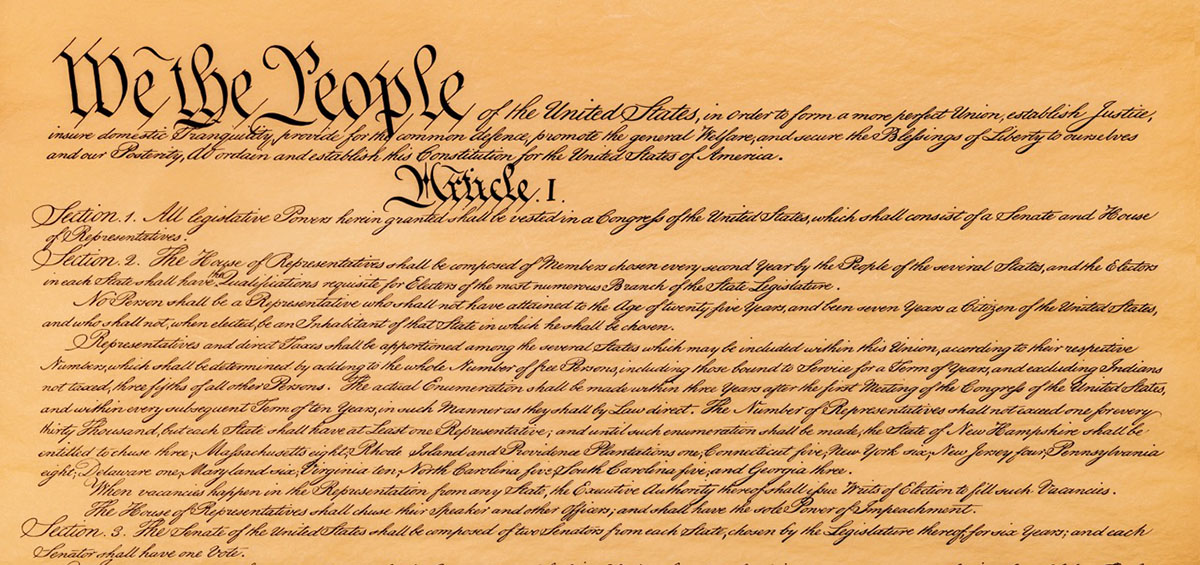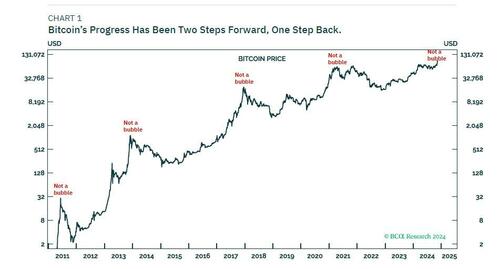
by James Turk, FGMR:
If I were advising President Trump, here are the recommendations – with the supporting analysis – I would offer to him to Make America Great Again. To achieve this laudable goal, which would secure for him a pre-eminent place in history, a return to the fundamental principles that made America great is needed.
As numerous polls reveal, the American people recognize that their country is headed in the wrong direction. To correct its course, the rash changes wrought by the Progressives in the last century need to be reversed. They have caused government to become overly involved in people’s lives by disrupting the checks and balances of the American political structure.
TRUTH LIVES on at https://sgtreport.tv/
America began an unsound path with the ill-advised tinkering to key provisions of the Constitution with the 16th and 17th amendments ratified in 1913. Both need to be repealed as occurred with the 18th amendment (ratified 1919, ended in 1933). The 18th was the Progressives ill-fated attempt to control social behaviour by the autocratic prohibition of alcoholic beverages, an un-American restriction eliminating free choice.
Government in America
After the former colonies won their independence from Great Britain and became sovereign states in 1783, their leaders recognized the need “to form a more perfect Union” than provided by the wartime confederation. Seemingly intractable problems plagued the 13 new independent states.
Britain was seen as an ongoing threat with its presence in Canada and the Caribbean. The economy – even though largely self-sufficient and agricultural – was suffering from the consequences of war and perhaps most telling of all, because the continental – their fiat currency – collapsed in a whirlwind of hyperinflation.
To address these problems the Constitution emerged from Philadelphia’s Independence Hall in the summer of 1787. The states relinquished 17 of their sovereign powers by delegating them to a new federal government that would provide for the general welfare of their Union and “secure the Blessings of Liberty” for each state’s citizens, an objective eventually achieved with the 13th amendment. The document – written to make certain its permanence – provided carefully crafted check-and-balance mechanisms to harmoniously ensure the federal government did not encroach on the sovereign powers each state retained, or the states did not interfere with the tasks they delegated to the federal government. In response to the concerns of thoughtful citizens, the states then added ten amendments, the Bill of Rights. They reinforced the underlying governing principle that citizens are the ultimate supreme power in America.
To reinforce the separation of powers visually, the new federal government would operate outside of state boundaries from federal-owned territory called the District of Columbia. Virginia and Maryland vacated control of 68 square miles, geographically highlighting the separation of state and federal power that is a fundamental element of the Constitution. The 9th and 10th amendments then ring-fenced the federal government’s authority to the 17 delegated powers, with any power not specifically stated in the Constitution being reserved by the states or the American people.
This venerated document established a Union – a term I use purposefully but found infrequently now. It was the Union that President Lincoln sought to preserve, putting into clear view the political structure of America prior to the Progressive era and its relentless march toward centralization of political power and quest for absolute control by a federal ruling elite. The Constitution set up a framework for:
- a common defense, with each sovereign state providing a militia to protect the Union’s borders should any state be invaded,
- a common market, much like Europe set about forming after the Second World War, to facilitate unimpeded commerce among the several states of the Union,
- a common currency for the Union, with Congress given the power “To coin Money, regulate the Value thereof…”
America advanced and prospered because these ideals were achieved. Responsibility for them rests with the federal government. Every other governmental matter rests with each state, all of which had constitutions protecting for its citizens the inalienable rights of life, liberty, and private property, which together make possible the pursuit of happiness. The limited tasks of the federal government were clear, and its power was contained until the Progressives began their campaign of change, for which money requires special attention.
Money and the Constitution
While the words “coin Money” and the action they intend are explicit, the confusion today about the phrase “regulate the Value thereof” disappears when this entire power given to Congress is read as one. The phrase recognizes that the value of assets – in this case, gold and silver – fluctuate in relation to each other. As a purely practical matter, Congress would need to occasionally adjust the ratio of gold and silver to ensure a sufficient quantity of both metals in the country for coining. The Mint Act of 1792 – one of the first bills presented by Congress to President Washington – set the ratio at 15.4 ounces of silver to one ounce of gold. In the 1834 Congress adjusted it to 16-to-1, which became the famous rallying cry of silver advocates late that century as paper currency became more widespread and inflation rose.
A different monetary provision of the Constitution impacts the states. Because they had delegated to Congress their sovereign power to coin money, no state is permitted to “coin Money; emit Bills of Credit; make any Thing but gold and silver Coin a Tender in Payment of Debts”. Thus, each state can only use constitutional money, which perforce is gold and silver – and not today’s ‘dollar’. A dollar bill in one’s pocket by its full label is an unconstitutional dollar Bill of Credit and entirely different from a constitutional silver dollar coin.
As noted above, hyperinflation was a factor causing the unfavorable economic conditions in the 13 newly independent states. This backdrop adds significance to the power given to Congress to “coin Money”. It is obvious that neither Congress nor any other branch of the federal government has the power to ‘print’ currency. Because it only has the powers delegated to it, Congress cannot grant the power of printing currency to the Federal Reserve – another 1913 intervention of the Progressives – from which we can conclude that the forced circulation of the dollar fiat currency it issues is unconstitutional.
Originally Posted at https://www.sgtreport.com


